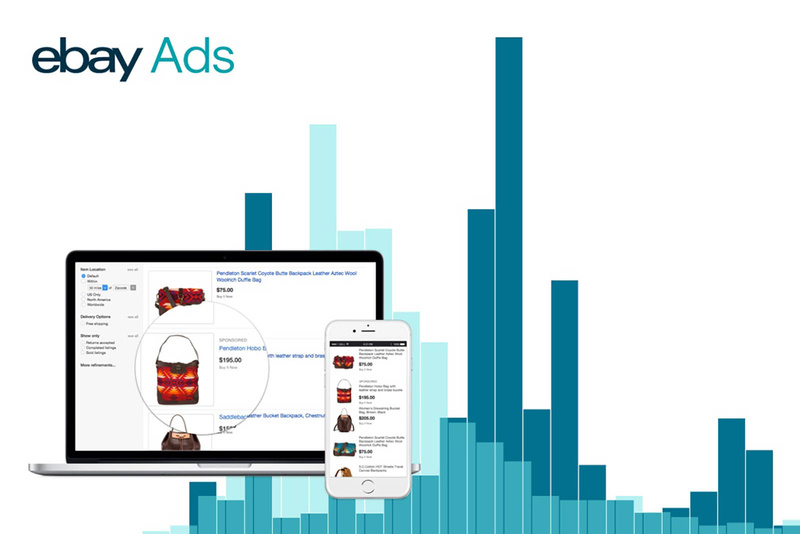Within eBay’s global marketplace, buyers have access to over a billion listings around the world. To empower sellers to boost their items’ visibility and to help shoppers find items they love, eBay offers an advertising tool, Promoted Listings, which helps participating listings stand out.
One conundrum that sellers face is how much to spend promoting their items. The fee for Promoted Listings is based on an “ad rate”: Sellers choose the percentage of the final sale price they’ll pay if a buyer purchases the item within 30 days of clicking on the promoted listing. Even with access to detailed metrics and sales reports evaluating Promoted Listings campaigns, calculating the optimal ad rate for an item can still be tricky.
To help sellers stay competitive, eBay used machine learning to develop an algorithm to provide an item-level suggested ad rate which helps balance cost and performance.
How It Works
Feature Engineering and Model Training
To estimate the probability of an item getting a significant visibility boost with a specific ad rate, eBay built an Xgboost classification model via Krylov, an internal machine learning platform. “Success” is defined as an item with significant improvement in impressions by showing in a more competitive slot (higher rank) compared to its organic status in major channels, including the search result page and view item page. The model evaluates the item’s features (count of historical impressions, clicks, transactions, number of competing promoted items in the same leaf category, price, etc.) over a set of reasonable ad-rate candidates and then generates the corresponding probability score.
Computing the Optimal Ad Rate
Next, the model assesses all the ad-rate candidates and their probabilities for success to recommend the optimal rate which maximizes the formula:
(price - final value fee - ad fee) * score
where “price” is the item’s price, “final value fee” represents the normalized eBay fee paid per transaction by the seller, “ad fee” equals the Promoted Listings ad rate multiplied by the item’s price paid on top of the final value fee, and “score” is the probability computed using the Xgboost model described above. The resulting suggested ad rate is designed not only to boost visibility, but also to help balance visibility with cost. This ad rate is then shared with the seller as the suggested item-level ad rate.
Evaluating the Model
Comparing with Trending Ad Rates
Before launching this machine-learning model, eBay provided a “trending ad rate” for each promoted item. This was the weighted average ad rate across similar items sold via Promoted Listings. eBay compared the new suggested ad rate with the trending ad rate for over 81 million experimental items and made an important discovery. In contrast to the trending ad rate’s unimodal distribution, the new suggested ad rate has a multimodal distribution. This showcases that the model not only guides sellers to set effective ad rates, but also helps sellers reduce their advertising costs by recommending ad rates lower than the trending rates when appropriate. Meanwhile, another study showed that sellers adopting suggested ad rates saw a much higher average ratio of converted items (sold items in a day per total adopted items for each seller) than sellers using trending ad rates, with an average ratio increase of 2.85%. This data suggests that the new ad-rate guidance can offer valuable direction for eBay sellers.
Validating Effectiveness
eBay also evaluated the effectiveness of the suggested ad rate through a backtesting analysis using historical impression, click and transaction data. First eBay split the experimental items into three segments depending on whether their current ad rate was lower, equal to or higher than the suggested ad rate. Then, eBay calculated each segment’s average number of daily impressions, clicks and transactions per item. The result, visualized by the bar plot below, shows that the items setting their ad rate equal to or higher than the suggested ad rate performed significantly better than the items bidding lower than the recommendation: The items setting their ad rate equal to the suggested ad rate have 78%, 76% and 38% increases in incremental daily average impressions, clicks and transactions respectively, compared to the items setting their ad rate lower than the suggestions. Furthermore, for items using ad rates higher than the suggested ad rate, incremental ratios grew even further to 188%, 238% and 48% increases in impressions, clicks and transactions respectively.
What’s Next
By improving the adoption of suggested ad rates, eBay can help sellers bring more high-quality listings into Promoted Listings. In addition to increasing items’ visibility, expanding participation also enhances the overall buyer experience. eBay will continue to analyze different needs of sellers and incorporate more signals to make the recommendations more robust, transparent and accurate.



